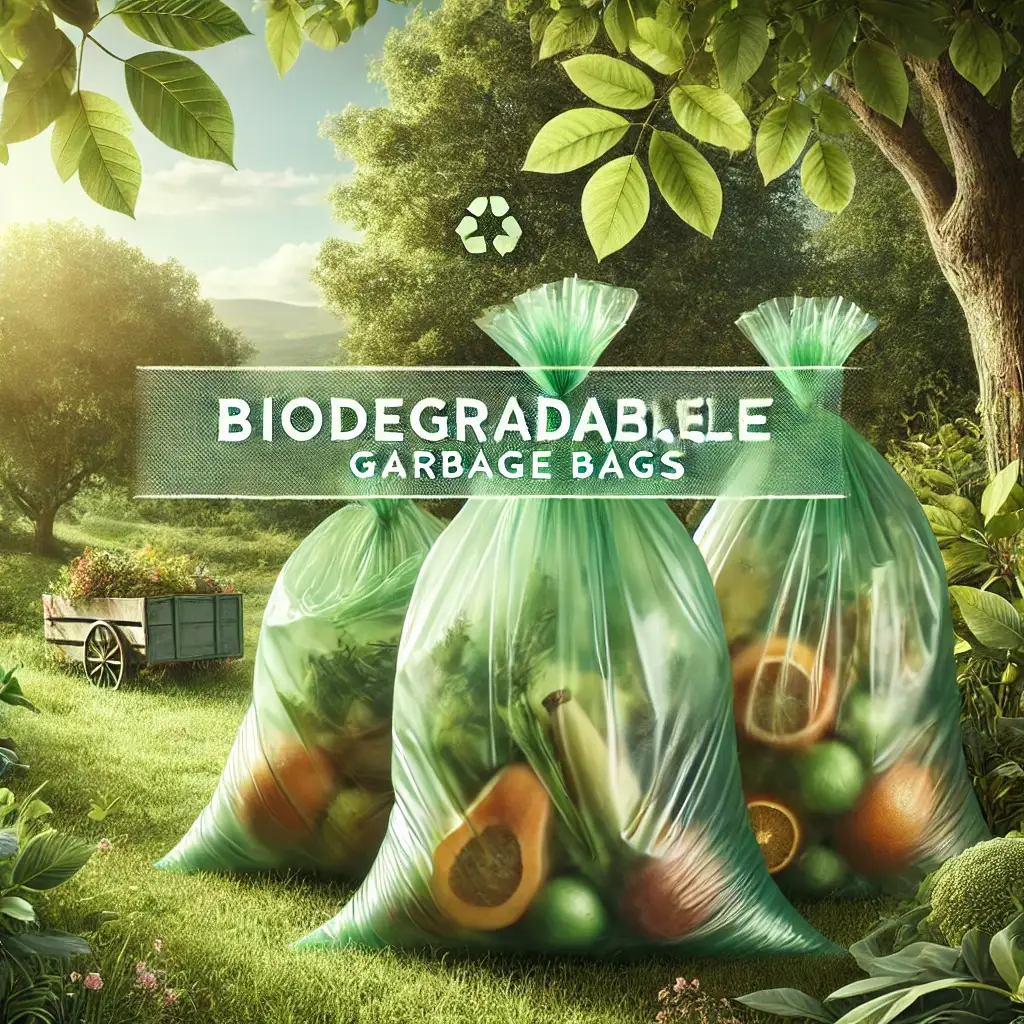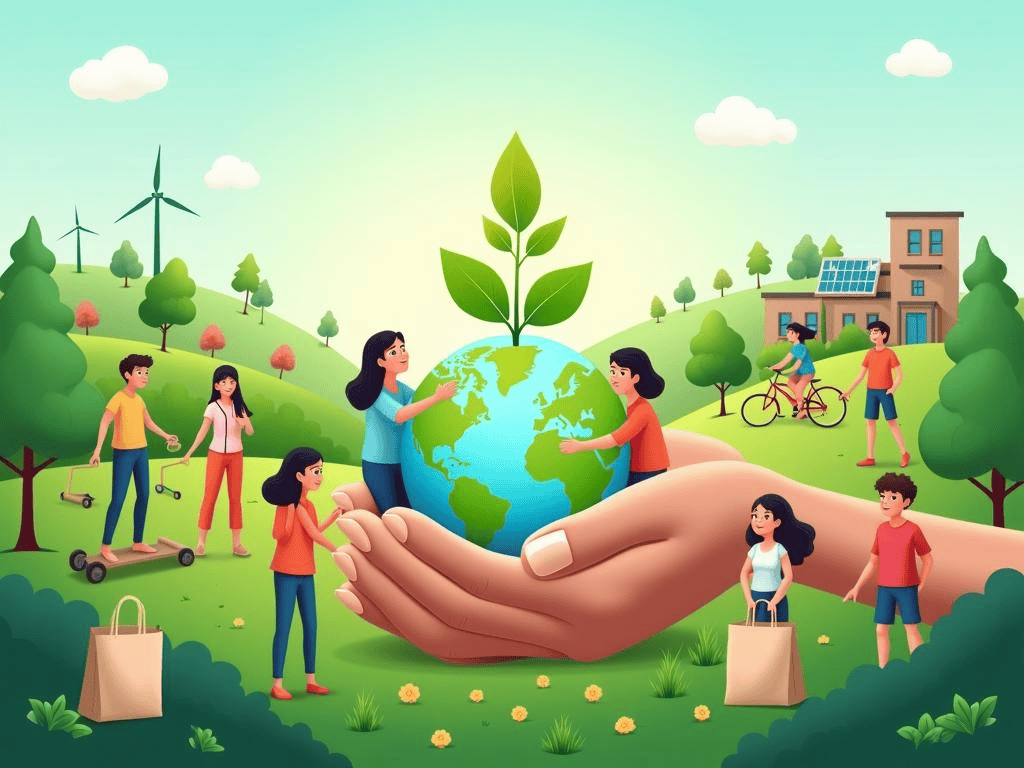
Empowering Sustainable Living for a Greener Tomorrow
Discover Tools, Calculators, and Resources to Reduce Your Carbon Footprint

Carbon Footprint Calculator
Measure your environmental impact in minutes.

Energy Savings Estimator
See how solar/wind could cut your bills

Waste Reduction Planner
Create a zero-waste plan for your home.
Get Your Free Ebook Now!Sustainable Living Made Simple - Your ultimate guide to eco-friendly living. Discover how to:
- ✓ Reduce waste & save money
✓ Lower your carbon footprint
✓ Create a greener home & lifestyle
Download Free Guide
Stats
Navigating a Sustainable Future
🌱 50,000+ Monthly Users Reducing Their Footprint
🌍 Record-Breaking Temperatures: In 2024, global temperatures exceeded 1.5°C above pre-industrial levels
♻️ 10,000+ Tons of CO2 Saved Collaboratively
🌍 China’s Carbon Intensity Reduction: China achieved a 3.4% reduction in carbon intensity in 2024
🌍 Active in 100+ Countries
♻️ Solar Energy Surge: The installation of new solar panels grew by 74% in 2024, making solar energy a leading renewable source.

DIY Eco-Craft Ideas, Green Living Tips
The Ultimate Guide to Biodegradable Garbage Bags
Biodegradable garbage bags are like special bags that help the Earth. They break down faster than regular plastic bags. Made from corn and plants, they turn into natural things when they decompose.
What Is Eco-Friendly Living? A Guide to Sustainable Practices
Eco-friendly living (also called green living or sustainable living) is a lifestyle focused on minimizing harm to the environment by reducing waste, conserving natural resources, and prioritizing renewable energy. It aims to balance human needs with planetary health, fostering a healthier future for all.
Key Principles of Eco-Friendly Living
- Support Ethical Brands: Choose companies with eco-certifications (e.g., Fair Trade, B Corp).
- Reduce, Reuse, Recycle: Cut waste by avoiding single-use plastics and repurposing items.
- Conserve Energy: Use energy-efficient appliances, LED bulbs, and renewable energy like solar power.
- Sustainable Transportation: Walk, bike, carpool, or use electric vehicles to lower emissions.
- Water Conservation: Fix leaks, install low-flow fixtures, and harvest rainwater.

Why Eco-Friendly Living Matters
- Positive Environmental Impact
- Health & Cost Savings
- Improved Community & Economy
Our Initiatives
Subscribe to our newsletter for the latest articles, tips, and updates on sustainable living. Follow us on social media and become part of a global community committed to making a difference.

Community Workshops
We host monthly workshops focusing on:
- Renewable Energy Education: Informing about solar and wind energy adoption for households.
- Sustainable Living Practices: Teaching zero-waste habits and eco-friendly product choices.

Green Business Partnerships
We collaborate with local businesses to:
- Implement Green Practices: Assisting in reducing their carbon footprint.
- Promote Sustainable Products: Highlighting eco-friendly alternatives.

Upcomping Podcast
Tune into our bi-weekly podcast where we discuss:
- Interviews with Environmental Leaders: Gaining insights from those at the forefront of sustainability.
- Innovative Sustainable Technologies: Exploring the latest in green tech.
Latest Articles
Read our latest blogs to help you towards your sustainability journey
How to Start Eco-Friendly Living: 7 Simple Steps
Follow these simple steps to start eco-friendly living

- Educate & Advocate: Share tips and support eco-policies.
- Switch to Reusables: Ditch plastic bags, bottles, and straws.
- Go Solar: Install solar panels or opt for green energy plans.
- Eat Sustainably: Prioritize plant-based meals and local produce.
- Compost Organic Waste: Turn food scraps into nutrient-rich soil.
- Adopt Minimalism: Buy less and choose quality over quantity.
- Use Public Transport: Cut CO2 emissions by 45% compared to driving alone.
Frequently Asked Question
Got Questions? We’ve Got Answers! Everything You Need to Know About Sustainable Living
What is zero-waste living?
Zero-waste living is a lifestyle that prioritizes reducing trash sent to landfills and incinerators by avoiding single-use items, repurposing materials, and embracing circular systems. It follows the “5 R’s”: Refuse (unnecessary items), Reduce (consumption), Reuse (products), Recycle (properly), and Rot (compost organics). For example, using reusable containers, buying in bulk, and composting food scraps. This approach minimizes pollution, conserves resources, and supports a circular economy.
What are the best eco-friendly alternatives to plastic?
Replace plastic with durable, biodegradable, or recyclable options:
Cleaning: Castile soap refills and wooden-bristle brushes.
These swaps reduce microplastic pollution and landfill waste.
Storage: Glass jars, stainless steel containers, or beeswax wraps.
Personal Care: Bamboo toothbrushes, shampoo bars, or silicone menstrual cups.
Shopping: Reusable cotton produce bags and stainless steel straws.
What are easy ways to start composting at home?
Composting organic waste (food scraps, yard trimmings) reduces methane emissions from landfills. Beginners can:
Opt for a backyard compost pile, worm bin, or municipal compost program.
Compost enriches soil, reduces chemical fertilizer use, and cuts landfill waste by 30%.
Use a countertop compost bin for scraps like fruit peels and coffee grounds.
Mix “greens” (nitrogen-rich materials) with “browns” (carbon-rich materials like dried leaves).
Why is reducing meat consumption considered sustainable?
Animal agriculture uses 77% of global farmland but provides only 18% of calories. It drives deforestation, water depletion, and methane emissions. Reducing meat intake:
Supports plant-based diets rich in legumes, grains, and vegetables, which require fewer resources to produce.
Lowers your dietary carbon footprint by up to 50%.
Preserves biodiversity and freshwater resources.
What is the environmental impact of fast fashion?
Fast fashion produces 92 million tons of waste yearly and consumes 79 trillion liters of water annually. Synthetic fabrics like polyester shed microplastics, harming marine life. Prioritize slow fashion: buy fewer, higher-quality pieces and support brands using recycled or organic materials.
How can I reduce my carbon footprint daily?
Start by adopting small, impactful habits:
Waste: Carry a reusable water bottle, coffee cup, and cloth bags to avoid single-use plastics.
These steps collectively reduce greenhouse gas emissions and save money.
Transportation: Walk, bike, carpool, or use public transit to cut emissions.
Energy: Switch to LED bulbs, unplug idle devices, and opt for renewable energy providers.
Diet: Eat plant-based meals 2–3 times weekly (livestock farming contributes 14.5% of global emissions).
How does sustainable fashion help the environment?
Sustainable fashion focuses on ethical production, durable materials, and fair labor practices. Fast fashion contributes to 10% of global carbon emissions and pollutes water with toxic dyes. Opt for:
Clothing repair: Mend or upcycle garments to extend their lifespan.
This reduces textile waste and supports ethical labor practices.
Secondhand shopping: Thrift stores or apps like Depop.
Eco-friendly brands: Those using organic cotton, recycled polyester, or Tencel.
Can eco-friendly living save money?
Yes! While some eco-products have higher upfront costs, long-term savings include:
Tax incentives for solar panels or electric vehicles in many regions.
Studies show households save 500–500–1,500 annually through sustainable habits.
Lower utility bills from energy-efficient appliances and reduced water use.
Reduced shopping costs by repairing items, buying secondhand, or using reusable alternatives (e.g., cloth napkins vs. paper).
How do I choose truly sustainable products?
Look for third-party certifications:
Cradle to Cradle: Circular, non-toxic design.
Avoid greenwashing by researching brands’ supply chains and environmental reports.
Fair Trade: Ensures ethical labor and eco-friendly practices.
FSC-Certified: Sustainably sourced wood/paper.
Energy Star: High energy efficiency.
How can I make my home more energy-efficient?
Seal drafts: Use weatherstripping or caulk to prevent heat loss.
Smart thermostats: Optimize heating/cooling schedules.
Energy audits: Identify inefficiencies in insulation or appliances.
Solar solutions: Install panels or solar-powered outdoor lights.
The U.S. DOE estimates these upgrades can cut energy bills by 25%.


